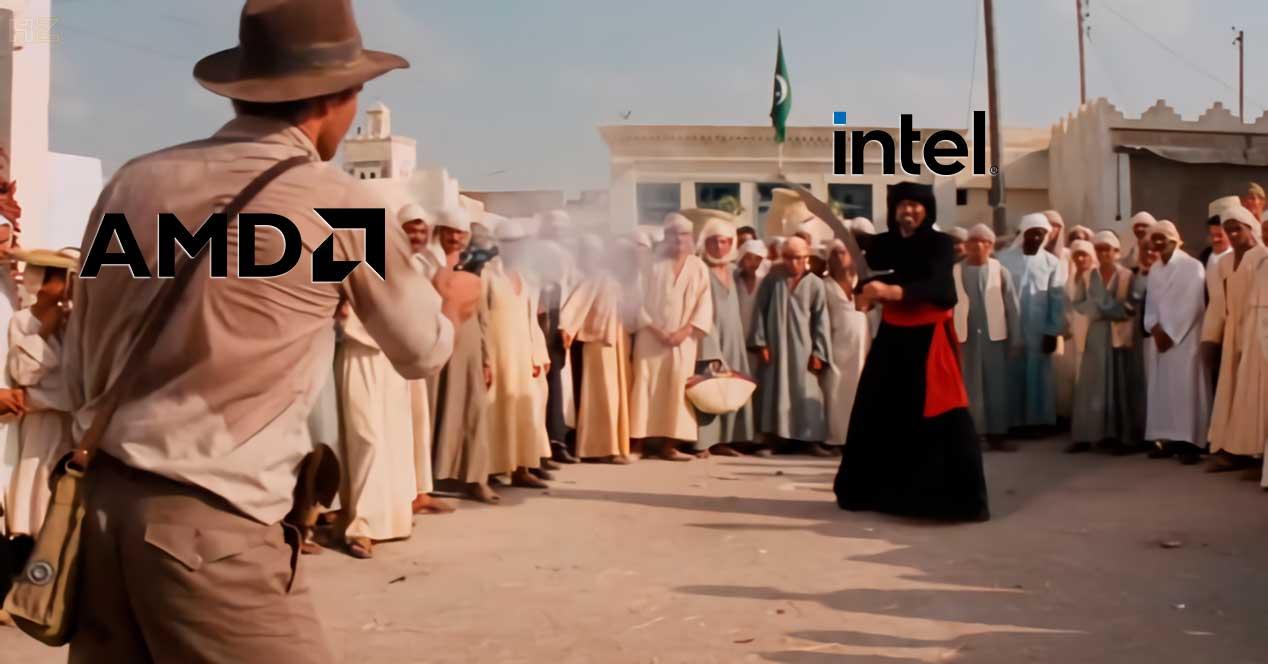As is often said in these cases: “there is more tension than Frodo in a jewelry store”. And it is that the tone rises between Intel and AMD, where the first to throw the dart were the blue ones. AMD has now responded indirectly by using the example of attacking Intel with a most picturesque comparison. Why this escalation of declarations? The answer has shifted from PCs to servers and… Is Intel vs. AMD a knife in the gunfight?
Between AMD and Intel it’s a war, a price war, a performance war and above all a server war, a sector as complicated as it is lucrative where the first steals shares from the second. With this approach, a series of statements are launched, each more insightful, which shows the tension that reigns among processors today.
From “AMD is in the rearview mirror” to phone booths
It was the CEO of Intel who was the first to shoot, stating (correctly) that his company had long been behind AMD and that with the launch of Alder Lake it was now AMD who was in the rearview mirror . It’s so true that the red team lowers the prices to compete while waiting for the Ryzen 7 5800X3D and to assess if they launch processors with more cores with V-Cache, mainly because Zen 4 will be delayed for a few months and they cannot compete with Intel in terms of performance.
This pretext and AMD’s null responses to such a statement from Gelsinger seem to have triggered another event of a similar nature, as Intel’s CEO attacked again with another comparison yesterday:
The fight between Intel Xeon and AMD EPYC is akin to a knife fight in a phone booth.
AMD hasn’t made an official statement on this through Lisa Su, but someone at the company has spiced it up a bit by adding a crossover of statements.
AMD vs Intel: knife in a shootout
It was David Melendrez, account manager for Dell at AMD, who on Linkedin showed his particular perspective on what Gelsinger exposed.
The answer was none other than:
Let him bring a knife to a shootout
This shows that Intel’s problem is bigger than they want to show because for Melendrez Intel is not “well equipped” to compete with its Xeon processors at EPYC. And he might not be wrong, mainly because Sapphire Rapids won’t have the same total thread count as the new EPYC Milan-X and the Intel platform is suffering from lags as we reported there two months ago.
As reported by investment bank Keybanc, AMD will increase its global share of servers above 20% in 2022, which is to be expected by Lisa Su as she herself teased almost a year ago. Therefore, the reds will reclaim more ground and Genoa launching by the end of the year can be key in this fight, because 2023 will be totally new ground where Intel will have to compete with a new architecture that we still don’t know not whether it will be homogeneous or heterogeneous.









